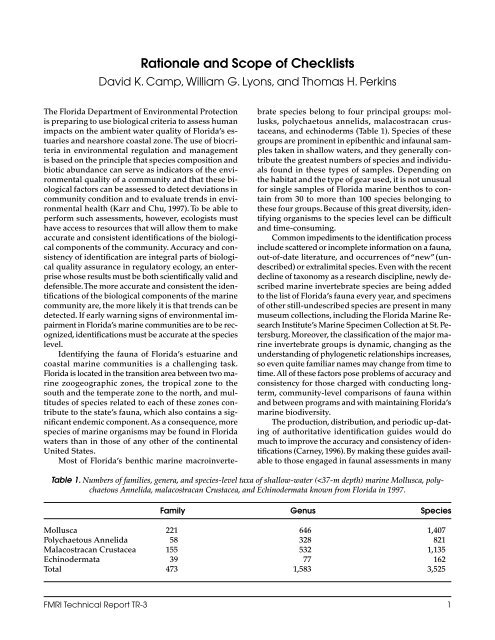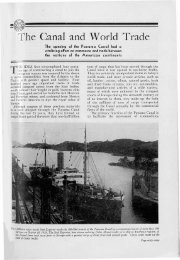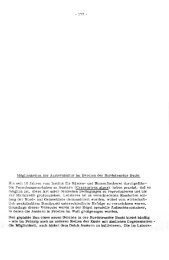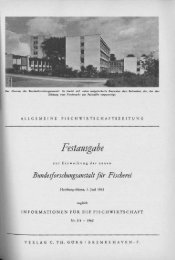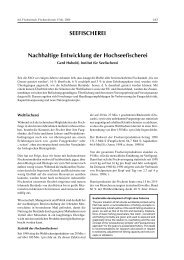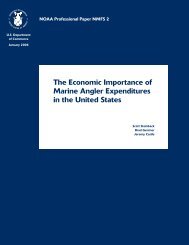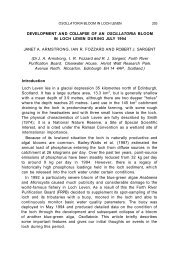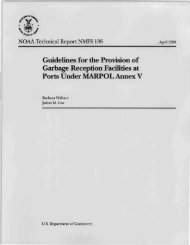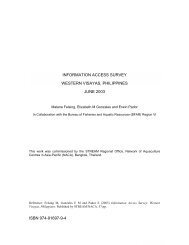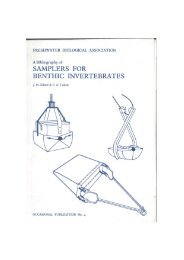Download - Aquatic Commons
Download - Aquatic Commons
Download - Aquatic Commons
Create successful ePaper yourself
Turn your PDF publications into a flip-book with our unique Google optimized e-Paper software.
Rationale and Scope of Checklists<br />
David K. Camp, William G. Lyons, and Thomas H. Perkins<br />
The Florida Department of Environmental Protection<br />
is preparing to use biological criteria to assess human<br />
impacts on the ambient water quality of Florida’s estuaries<br />
and nearshore coastal zone.The use of biocriteria<br />
in environmental regulation and management<br />
is based on the principle that species composition and<br />
biotic abundance can serve as indicators of the environmental<br />
quality of a community and that these biological<br />
factors can be assessed to detect deviations in<br />
community condition and to evaluate trends in environmental<br />
health (Karr and Chu, 1997). To be able to<br />
perform such assessments, however, ecologists must<br />
have access to resources that will allow them to make<br />
accurate and consistent identifications of the biological<br />
components of the community. Accuracy and consistency<br />
of identification are integral parts of biological<br />
quality assurance in regulatory ecology, an enterprise<br />
whose results must be both scientifically valid and<br />
defensible.The more accurate and consistent the identifications<br />
of the biological components of the marine<br />
community are, the more likely it is that trends can be<br />
detected. If early warning signs of environmental impairment<br />
in Florida’s marine communities are to be recognized,<br />
identifications must be accurate at the species<br />
level.<br />
Identifying the fauna of Florida’s estuarine and<br />
coastal marine communities is a challenging task.<br />
Florida is located in the transition area between two marine<br />
zoogeographic zones, the tropical zone to the<br />
south and the temperate zone to the north, and multitudes<br />
of species related to each of these zones contribute<br />
to the state’s fauna, which also contains a significant<br />
endemic component. As a consequence, more<br />
species of marine organisms may be found in Florida<br />
waters than in those of any other of the continental<br />
United States.<br />
Most of Florida’s benthic marine macroinverte-<br />
brate species belong to four principal groups: mollusks,<br />
polychaetous annelids, malacostracan crustaceans,<br />
and echinoderms (Table 1). Species of these<br />
groups are prominent in epibenthic and infaunal samples<br />
taken in shallow waters, and they generally contribute<br />
the greatest numbers of species and individuals<br />
found in these types of samples. Depending on<br />
the habitat and the type of gear used, it is not unusual<br />
for single samples of Florida marine benthos to contain<br />
from 30 to more than 100 species belonging to<br />
these four groups. Because of this great diversity, identifying<br />
organisms to the species level can be difficult<br />
and time-consuming.<br />
Common impediments to the identification process<br />
include scattered or incomplete information on a fauna,<br />
out-of-date literature, and occurrences of “new” (undescribed)<br />
or extralimital species. Even with the recent<br />
decline of taxonomy as a research discipline, newly described<br />
marine invertebrate species are being added<br />
to the list of Florida’s fauna every year, and specimens<br />
of other still-undescribed species are present in many<br />
museum collections, including the Florida Marine Research<br />
Institute’s Marine Specimen Collection at St. Petersburg.<br />
Moreover, the classification of the major marine<br />
invertebrate groups is dynamic, changing as the<br />
understanding of phylogenetic relationships increases,<br />
so even quite familiar names may change from time to<br />
time. All of these factors pose problems of accuracy and<br />
consistency for those charged with conducting longterm,<br />
community-level comparisons of fauna within<br />
and between programs and with maintaining Florida’s<br />
marine biodiversity.<br />
The production, distribution, and periodic up-dating<br />
of authoritative identification guides would do<br />
much to improve the accuracy and consistency of identifications<br />
(Carney, 1996). By making these guides available<br />
to those engaged in faunal assessments in many<br />
Table 1. Numbers of families, genera, and species-level taxa of shallow-water (


